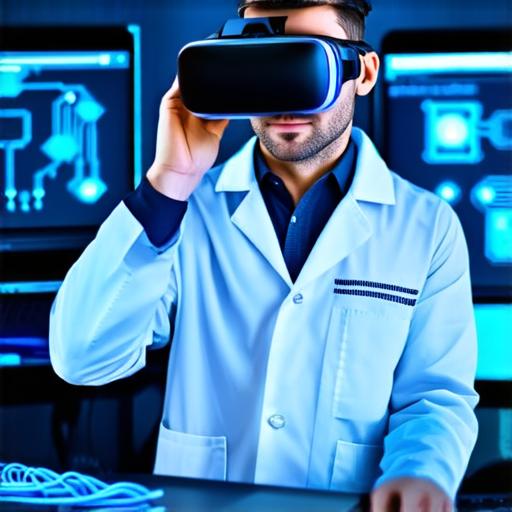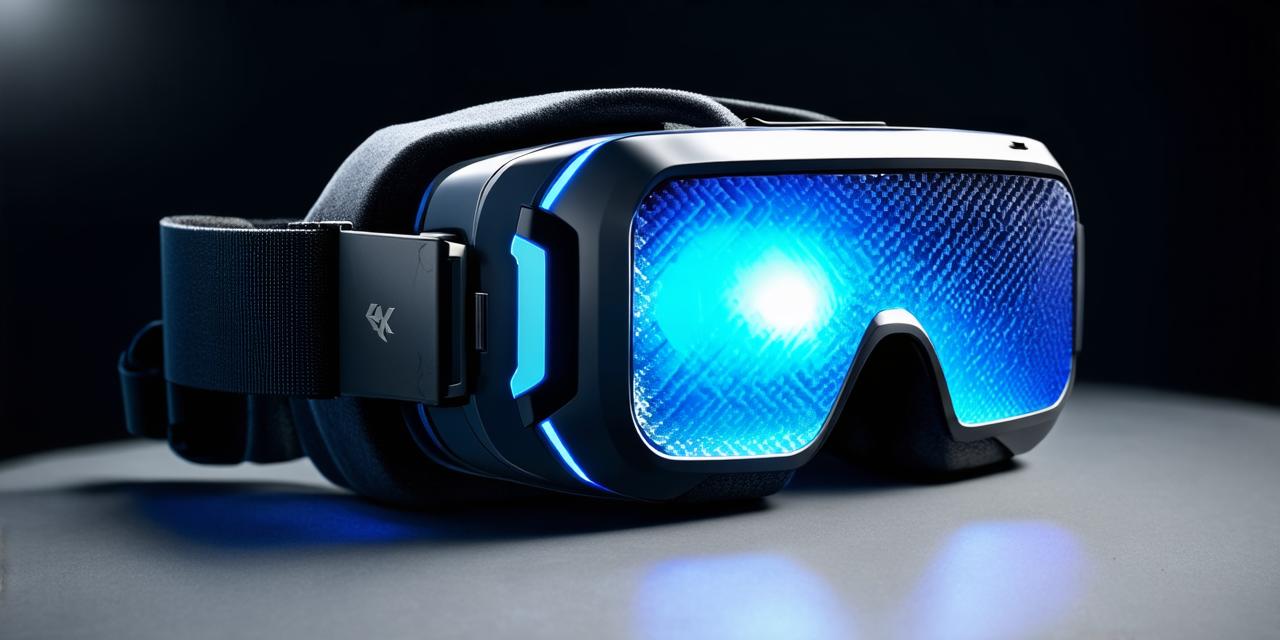How Virtual Reality Glasses Work
Virtual reality glasses use advanced computer-generated graphics and sensors to create a 3D environment that appears real to the user. They can be LCD or OLED displays with a resolution ranging from 720p to 8K.
The glasses typically consist of two screens, one for each eye, that are mounted in front of the wearer’s face. These screens display high-resolution images that are synchronized to move with the user’s head movements, providing a seamless and immersive viewing experience.
The main components of virtual reality glasses include:
- Display screens: These screens use advanced computer technology to generate 3D images that appear real to the user.
- Sensors: These sensors track the user’s head movements, allowing the glasses to adjust the image displayed on each screen in real-time. The most commonly used sensors are accelerometers, gyroscopes, and magnetometers.
- Processing unit: This processing unit is responsible for generating and synchronizing the images displayed on the screens. It can be a dedicated VR processing unit or a CPU with specialized software.
- Power source: The virtual reality glasses typically require a power source, such as a battery or power cable, to function.

Impact on Development
Virtual reality glasses are an essential component of VR development. They provide developers with a way to create immersive and interactive experiences that can be used in a variety of industries, including gaming, education, and healthcare. The impact of virtual reality glasses on development is significant, as they allow developers to create highly engaging and immersive experiences that can capture the user’s attention and keep them engaged for extended periods.
Real-Life Examples
There are many real-life examples of how virtual reality glasses have been used in development. One such example is the use of virtual reality glasses in the gaming industry. By using virtual reality glasses, developers can create highly immersive and interactive gaming experiences that allow users to feel like they are part of the game world. For instance, virtual reality games such as “Beat Saber” and “Job Simulator” provide users with an incredibly realistic and immersive experience that makes them feel like they are actually playing the game.
Another example is the use of virtual reality glasses in the education industry. By using virtual reality glasses, educators can provide students with a highly immersive and interactive learning experience that allows them to explore complex concepts in a more engaging way. For instance, virtual reality simulations can be used to teach anatomy by allowing students to virtually explore the human body. Similarly, virtual reality simulations can be used to teach history by allowing students to virtually visit different locations and interact with various objects from that time period.
FAQs
1. What are virtual reality glasses?
Virtual reality glasses are a type of head-mounted display (HMD) that is used to provide users with a realistic and immersive viewing experience. They use advanced computer-generated graphics and sensors to create a 3D environment that appears real to the user.
2. How do virtual reality glasses work?
Virtual reality glasses typically consist of two screens, one for each eye, that are mounted in front of the wearer’s face. These screens display high-resolution images that are synchronized to move with the user’s head movements, providing a seamless and immersive viewing experience. The sensors track the user’s head movements, allowing the glasses to adjust the image displayed on each screen in real-time.
3. What are the main components of virtual reality glasses?
The main components of virtual reality glasses include display screens, sensors, processing unit, and power source. Display screens use advanced computer technology to generate 3D images that appear real to the user. Sensors track the user’s head movements, allowing the glasses to adjust the image displayed on each screen in real-time. The processing unit is responsible for generating and synchronizing the images displayed on the screens. Power source provides power to the virtual reality glasses.
4. How have virtual reality glasses impacted development?
Virtual reality glasses have had a significant impact on development, allowing developers to create immersive and interactive experiences that can be used in a variety of industries, including gaming, education, and healthcare. Virtual reality glasses provide users with a highly engaging and immersive experience that can capture their attention and keep them engaged for extended periods.
5. What are some real-life examples of how virtual reality glasses have been used in development?
There are many real-life examples of how virtual reality glasses have been used in development, including the use of virtual reality glasses in the gaming industry to create highly immersive and interactive gaming experiences and the use of virtual reality glasses in the education industry to provide students with a highly immersive and interactive learning experience.
